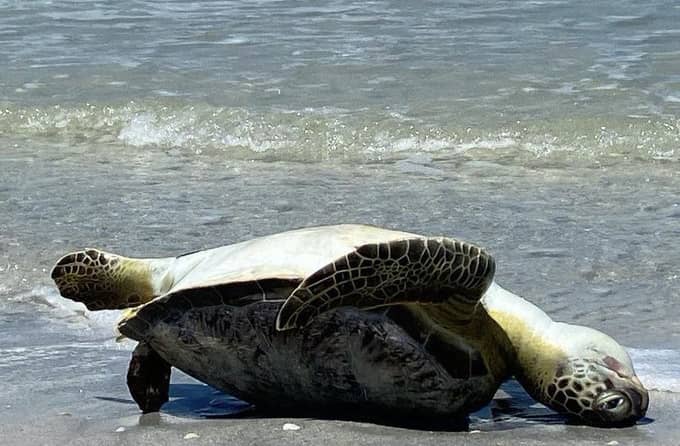Thrive
Red tide continues to dissipate in Tampa Bay, spreads further along Gulf Coast

Red tide conditions have greatly improved in Tampa Bay, although Karenia brevis – the organism that causes red tide – persists along a large swath of the Florida Gulf Coast.
According to the latest Florida Fish and Wildlife Commission maps, high concentrations of K. brevis are detected in the gulf from Lee County to Pasco County. Low concentrations have recently been recorded farther north off the Hernando and Citrus County coasts. J.P. Brooker, Director of Florida Conservancy for the Ocean Conservancy, said that while there have not been any fish kills reported in the bay lately, they are still occurring south of the bay. With higher concentrations on the north end of Pinellas County, he suspects it is a matter of time before fish kills are reported there as well.
Brooker attributes the improvement in the bay to the concerted efforts to clean up the dead fish, along with rain and freshwater inputs lowering the salinity levels. However, he warns that “elsewhere in the Gulf it’s definitely a situation that is continuing, and it’s spreading across multiple counties now.”
As for the blooms getting pushed back into the bay, Brooker warns that as the area progresses through hurricane season, that is a distinct possibility. If a storm makes its way up the coast with a southerly wind – as happened with Tropical Storm Elsa – the bay could once again become inundated with these harmful algal blooms.
The good news is that storms can also cool the water and lower salinity levels, two things that combat the formation and severity of red tide. A large hurricane in the Gulf could also spread the blooms around and break them up or push them farther offshore.
“It could do either – it’s a total crapshoot,” said Brooker.
Brooker also cautions that it is still early in the red tide season, with blooms normally occurring later in the year. Compared with the last severe red tide in 2018, the area has quite some time before it is out of the woods.
“We’re only about halfway along compared to the 2018 event, and we’ve already got more dead fish and a pretty substantial spread,” said Brooker. So, if you’re looking at 2018 as a model, we’ve still got a long road to go for 2021.”
“There’s so much more potential time for this event to play out.”
Brooker said the investigation into the Piney Point spill is still ongoing, and the Ocean Conservancy has partnered with the University of Florida’s Center for Coastal Solutions to conduct testing on what impacts Piney Point has had on red tide. He said that they have no conclusive science yet, and “to be perfectly honest, we may never get conclusive science that says Piney Point wastewater inputs into the bay caused this red tide event.”
However, Brooker added that “you don’t have to be a scientist to know the linkage between nitrogen inputs and red tide. The evidence is incontrovertible that there is a link between nutrients and red tide.”
He said that while Piney Point deserves a lot of attention, it is important not to lose sight of all the other ecosystem factors also driving these ngative water quality events in Florida. These include warming water temperatures, nutrient inputs from municipal, residential, commercial, and agricultural sources, and tropical weather becoming more frequent and severe.
Brooker points out the city and county workers have done an excellent job of picking up over 1,500 tons of dead fish, although there are still plenty on the beaches. “They’re just not rotting; they’re dried up in hard bony messes now.”
While Governor DeSantis has not declared a state of emergency in response to the disaster, Brooker thinks pressure applied by his organization and others – such as the Tampa Bay Waterkeepers and the St. Petersburg City Council – has helped to further bring legislators in Tallahassee to the table and recognize the seriousness of the event. Brooker also warned that it still may get to that point, once again looking back to 2018 as a reference.
“In 2018, I think it was seven counties that red tide had spread across, and we’re at five-plus now,” said Brooker. “We might get to a situation where we have seven counties, and it would seem that if that was an emergency in 2018, it’s an emergency in 2021 as well. We might still get there.”







